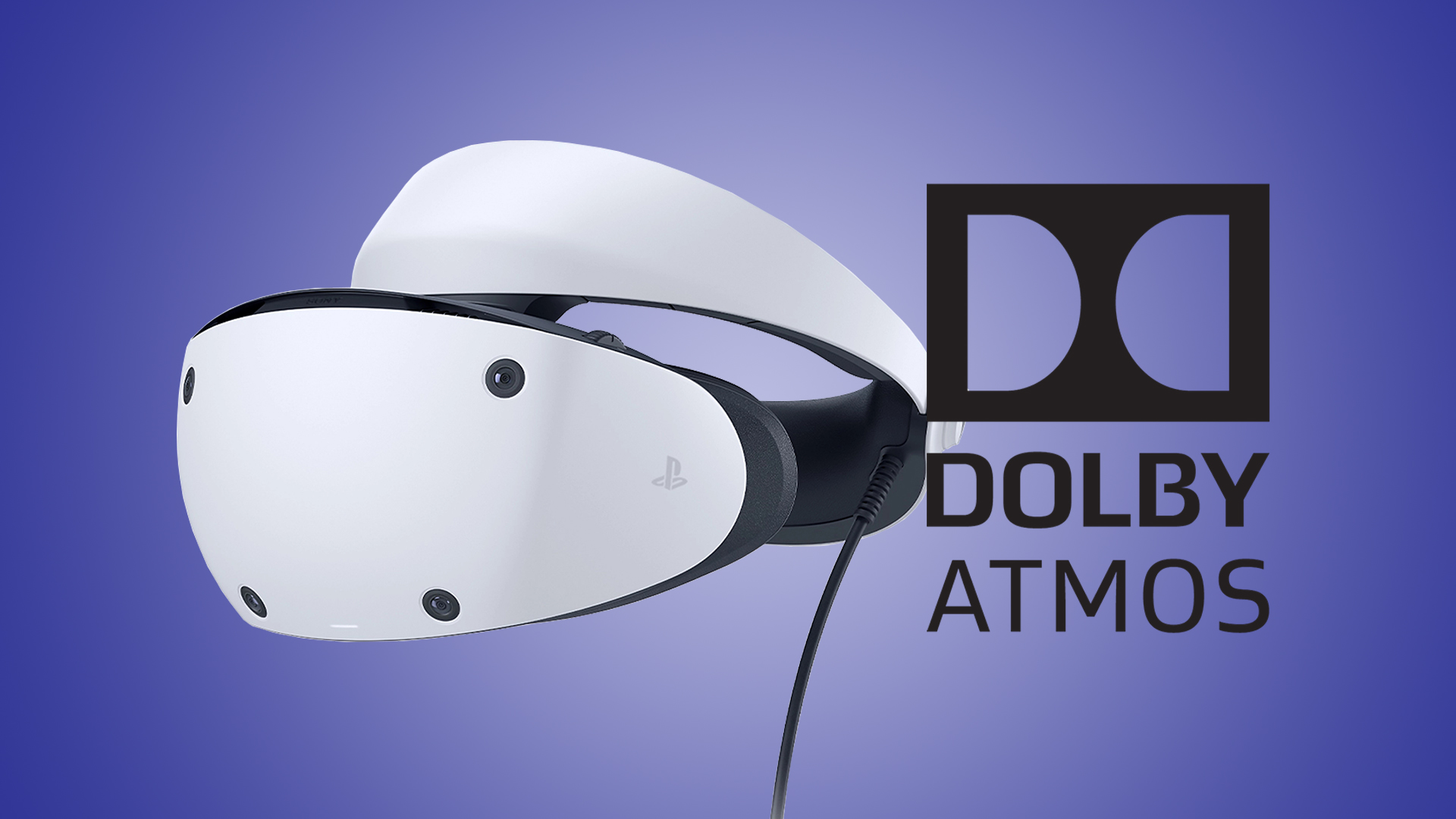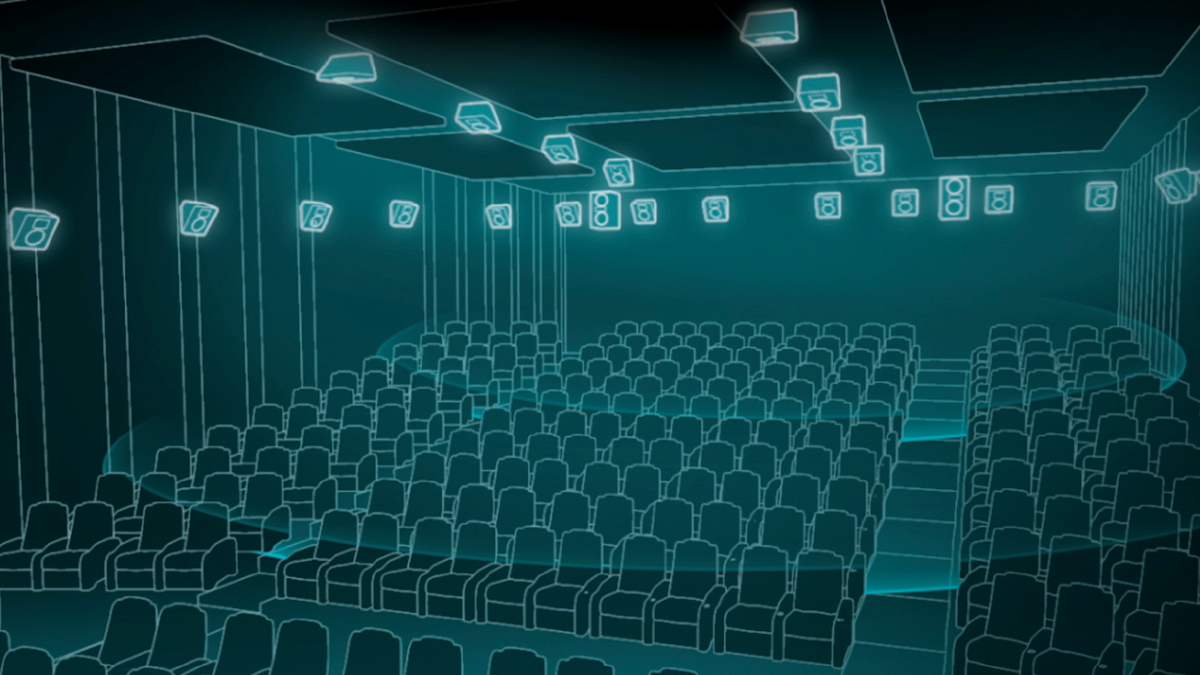I should love PSVR 2's virtual cinema, but it's half-baked without Dolby Atmos
Because the PS5's 3D Audio is great for games, but not movies

I've always loved the idea of using VR as a personal movie theater. Not too many of us have the space for a really huge home theater projector screen, but with VR, you can have that feeling even while sitting in a tiny box room, and it was one of my most hoped-for features of PSVR 2.
So when Sony announced that PSVR 2 will have a Cinematic Mode, I was so happy – at first. The 1080p-quality video screen is fair enough, considering the device only has 4K to play with in total. The ability to have a native 24fps refresh rate will hopefully mean you get that perfect cinematic feel to the motion, which most TVs in homes today can't even get right. As someone who goes to the cinema multiple times per week, it sounds perfect for when I want to watch a large-scale movie when my TV is otherwise engaged.
But here's the problem: there's no mention of there being cinematic audio support to match the visuals. In particular, what we need from Sony here is Dolby Atmos, for the complete 3D audio experience… but Sony hasn't supported Dolby Atmos on the PS5 so far, and there's no sign that it's going to start now. (I've contacted Sony to ask what audio formats may be supported, and will update if it provides any confirmation.)
Why is this so important? Well, sound is just as much a part of the movie theater experience as visuals, so I'm not sure Cinematic Mode can truly be called that if it's not delivering the soundtrack at its best, and in a way that matches how the visuals work.
The case for head-tracked sound
For those who've never tried the cinema mode on the original PlayStation VR, or on something like the Meta Quest 2, the crucial part is that it's not like the video just plays on the screens strapped in front of your eyes. It happens in a 3D world – as if you're sitting in a cinema. When you tilt or turn your head, the screen stays in its position in the virtual space. This means you don't feel eye strain when watching it, because it feels far away. On the original PSVR, this was all too low-res to really satisfy, but that's not the case in the new version.
But the sound will also need to happen in a head-tracked 3D space, just like the visuals. In the same way that the screen stays at a particular point in space, the center channel should always come from the virtual screen, with other channels in the correct places relative to that.

This isn't some pie-in-the-sky technology. I already get this kind of audio head-tracking with Dolby Atmos soundtracks on my AirPods Pro and AirPods Max. When I watch a movie on my iPhone 13 with them, they give me head-tracked surround sound, where the center channel comes from my phone, and everything else surrounds my head correctly. And it's incredible – it's truly the killer feature for those headphones for movie lovers.
Sign up for breaking news, reviews, opinion, top tech deals, and more.
Why is Dolby Atmos so important for achieving this? Because it's designed for 3D environments – it's an object-based format, meaning that instead of sound coming from one of five surround 'channels', each sound is an individual element mapped in 3D space, and it will come from whatever direction it needs to. That makes it ideal for head tracking, because that also requires an understanding of 3D space – the two pair perfectly.
Most Blu-rays released today, and most big streaming services, support Dolby Atmos for big movies. So the stage should be set for head-tracked Dolby Atmos to knock it out of the park on PSVR 2. And yet…
Sony's Dolby Atmos blind spot
Right now, Sony's 3D Audio headset support is limited to games only – and even then, only certain games get the full effect. It's all in Sony's own custom format, and though it's object-based, just like Dolby Atmos, as it stands there's no crossover between them.
The PS5 has never supported Dolby Atmos properly. Mercifully, Sony did include the option for the console to pass Dolby Atmos data from a Blu-ray or streaming service directly to your TV or Dolby Atmos soundbar, so that if your other device supports it, you can still get the full effect. But that won't work with PSVR 2, because the sound will be going direct from the PS5 to whatever headset you're using.
So as far as we can tell – until Sony corrects us – the movie sound offered by the PSVR 2 will be the PS5's built-in fallback: converting the audio to Linear PCM. What does this mean? Well, basically, it's high-quality sound, but it's stereo.
This means that even if Sony creates a way to add its own head-tracked 3D Audio format to movies (which I have to assume it will), this will be based on a super-basic version of the movie's sound. It'll be faking the 3D element of it – taking two-channel stereo and guessing what that would be like in 3D.
That's never going to sound as good as if Sony supported Dolby Atmos, and gave us the real 3D deal. Without this, the PSVR 2's Cinematic Mode is going to be less IMAX, and more "a projector in some dude's basement with a white sheet on the wall".

Matt is TechRadar's Managing Editor for Entertainment, meaning he's in charge of persuading our team of writers and reviewers to watch the latest TV shows and movies on gorgeous TVs and listen to fantastic speakers and headphones. It's a tough task, as you can imagine. Matt has over a decade of experience in tech publishing, and previously ran the TV & audio coverage for our colleagues at T3.com, and before that he edited T3 magazine. During his career, he's also contributed to places as varied as Creative Bloq, PC Gamer, PetsRadar, MacLife, and Edge. TV and movie nerdism is his speciality, and he goes to the cinema three times a week. He's always happy to explain the virtues of Dolby Vision over a drink, but he might need to use props, like he's explaining the offside rule.